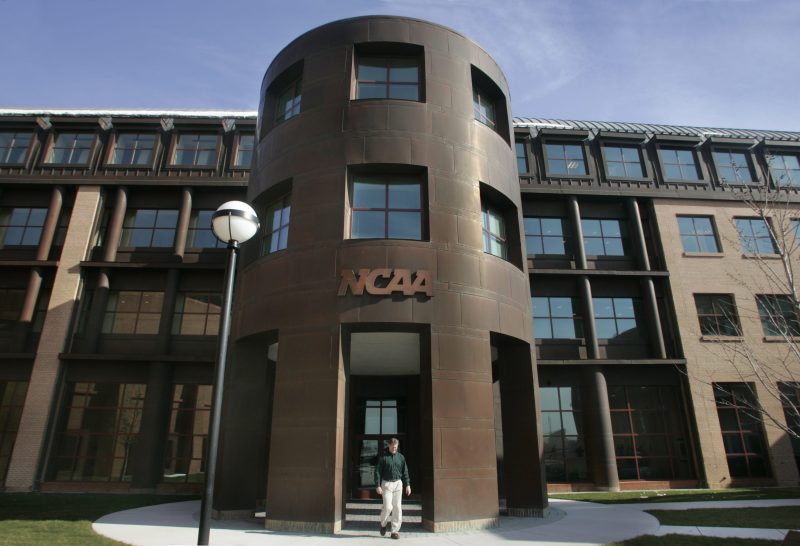
A federal judge has granted final approval of a settlement of three antitrust cases addressing the compensation of college athletes Friday, ending a protracted legal debate and ushering in an extraordinary era that will allow NCAA member schools to directly pay their athletes and provide a $2.8 billion damages pool for former and current athletes.
According to the approval issued by U.S. District Judge Claudia Wilken in Oakland, California, schools will be able to compensate their athletes for the use of their name, image and likeness across all sports through an expected initial annual allotment of $20 million-$23 million per school, according to estimates. The changes are set to go into effect July 1.
In a 76-page opinion, Wilken ruled that recent changes the principals had made to the settlement’s inclusion of roster limits were sufficient. And, following through on what she had said weeks ago, she overruled a wide range of other objections that had been raised to the settlement, including those connected to Title IX and the rights of future athletes over the 10-year run of the settlement agreement.
‘We could not be more excited for the hundreds of thousands of athletes who will now get to enjoy the tens of billions of dollars in new compensation and benefits that the settlement will provide,’ Steve Berman, a lawyer for the plaintiffs, told USA TODAY Sports. ‘It is a historic day for college sports and the rights of athletes.’
The total allotment for schools’ NIL payments to athletes will be guided by a cap of 22% of the combined total of certain revenues of Power Five conference schools. The dollar amount is set to grow annually, and plaintiffs’ economic expert Dan Rascher estimated that these payments will total at least $19.4 billion over the 10-year settlement.
The agreement resolves lawsuits involving the NCAA, the Power Five conferences and lawyers for the plaintiffs by providing a deal that also includes the damages pool, most of which is to be paid over 10 years to compensate current and former athletes who were unable to participate in NIL contracts. Athletes whose college careers began between 2016 and Sept. 15, 2024, are eligible for compensation.
The damages money will come from the NCAA, which the largest share will come from the association’s central office via new revenue, cost savings and reserve funds. The remainder will come from reductions in NCAA distributions to Division I members, with roughly a quarter coming from members of the Power Five conferences.
‘Approving the agreement reached by the NCAA, the defendant conferences and student-athletes in the settlement opens a pathway to begin stabilizing college sports,’ NCAA President Charlie Baker said in a statement. ‘This new framework that enables schools to provide direct financial benefits to student-athletes and establishes clear and specific rules to regulate third-party NIL agreements marks a huge step forward for college sports. ’
Less than two hours after Wilken released her ruling, the conferences announced the establishment of an entity called the College Sports Commission that will be responsible for the implementing, overseeing and enforcing schools’ compliance with the settlement. ‘The Commission will investigate any potential violations of these rules, make determinations regarding potential rules violations and penalties, provide notice and opportunity to be heard, participate in the arbitration process and ultimately administer penalties for violations of these rules,’ the announcement said.
Bryan Seeley was named the Chief Executive Officer of the commission. He most recently served as an executive vice president of legal & operations with Major League Baseball. Seeley was also an assistant U.S. attorney in Washington, D.C.
During the process of the settlement approval, there was a wide range of objections to Wilken made in-person and in writing. It is expected there will be some of those objectors appealing her approval. An appeal must be made within 30 days of the decision.
In another profound shift for college sports, for schools that choose to pay their athletes for the NIL, the settlement eliminates the current system of team-by-team scholarship limits to implement roster caps on NCAA sports. This will give schools the opportunity to expand the total number of scholarships they can provide but could force some sports to trim their traditional roster sizes.
Citing Rascher’s estimates, Wilken wrote that the elimination of scholarship limits could result in more than 115,000 additional scholarships being made available to Division I athletes.
The inclusion of the roster limits was the target of several objectors to the agreement, who cited the potential for thousands of walk-on athletes and current high school recruits to lose their place on Division I teams. Wilken delayed final approval of the settlement on April 23 due to concerns about how impact on those people.
The principals revised the settlement in early May to address the issue. They wrote that they had agreed to a setup under which schools would have the option to exempt from the limits any athlete who was on a roster in 2024-25 and who has been or would have been removed for 2025-26 because of the limits for the remainder of their college careers. It also would let schools similarly accommodate any high school senior who was ‘recruited to be, or was assured they would be’ on a Division I school’s roster for the 2025-26 school year. These athletes are to be identified by the schools as ‘Designated Student-Athletes.’
However, this did not remove the roster limits from the settlement. And this did not require schools to keep all of their current athletes on their rosters — or to exceed the roster limits at any point. It just gave them the option to do so if they carried a ‘Designated Student-Athlete.’
The objectors argued that this did not solve the problem Wilken had raised. “A settlement like this one, which vests (the schools) with ‘discretion’ to provide relief – or not – is no settlement at all,” wrote a group represented by Chicago-based attorney Steve Molo.
However, Wilken ended up siding with the principals.
In her ruling, she wrote the modifications ‘negate any harm that the roster limits could have caused to (athletes) who were or will be impacted by the immediate implementation of the roster limits to be eligible for roster spots without the roster limits provisions posing an obstacle.’
She added that the ‘modifications to exempt Designated Student-Athletes from roster limits will make those athletes more valuable to teams than they otherwise would be, because they will be able to participate on a team without counting against the roster limits.’
Molo and Laura Reathaford, another attorney who represented an objection connected to roster limits, were not immediately available for comment.





























